Huge hammerhead shark caught off K’gari
K’gari may be the largest sand island and one of the most beautiful places in the world, but recent shark catches may have some visitors thinking twice about taking a dip. SEE THE PHOTOS
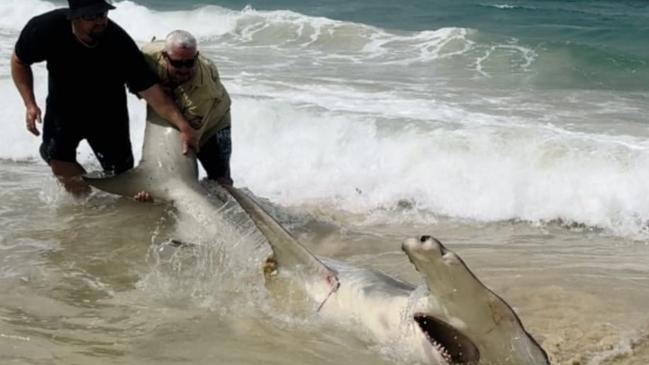
QLD News
Don't miss out on the headlines from QLD News. Followed categories will be added to My News.
K’gari or Fraser Island as many still like to call it, may be the largest sand island and one of the most beautiful places in the world, but you might not want to swim there.
In recent times, there have been some monster sharks caught off the 122km long Queensland island visited by more than 500,000 people each year.
The four-wheel-drive and camping paradise is shared not only by adventure seekers but also dingoes, great white, tiger and bull sharks, not to mention the odd deadly snake.
It’s also known for some hazardous surf, and the lack of lifesaving patrols, which together with its remoteness, makes it a place where tourists could easily drown, or be taken by something much bigger than them if they venture out too far.
This week, a monster 4.2 metre hammerhead shark was been caught off K’gari by fishermen chasing Spanish mackerel.
There’s also been a tiger shark caught by fisherman using a drone, while a bronze whaler shark has been caught in the nearby waters of Hervey Bay.

Kurt Donald from Bribie Island posted he had caught and quickly released the ‘magnificent’ hammerhead creature.
“At 4.2m it’s the biggest one we have seen,’’ he said.
The catch sparked controversy on social media with Lisa Jane Hills posting that hammerheads had a 95% fatality rate after catch and release.

“They are also listed as critically endangered everywhere else in the world. I don’t find this cool at all.”
Justin Dullard hit back: “So they should keep and eat instead of catch and release?”
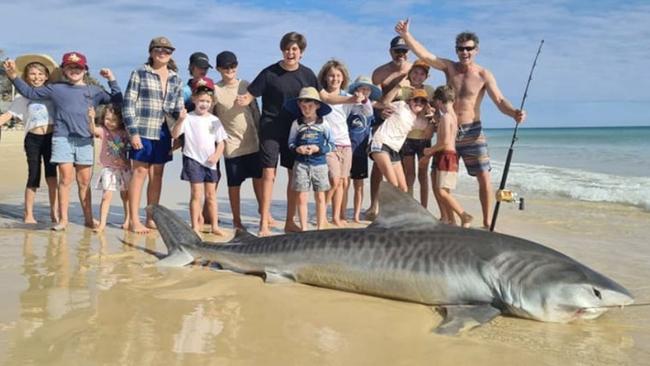
Mr Donald said it was an accidental catch while fishing for Spanish mackerel and the hooks were removed and the shark released while in water.
Daniel Holzheimer questioned the fatality figures, saying they were for when a shark was caught in nets on a trawler not by line with a hook.
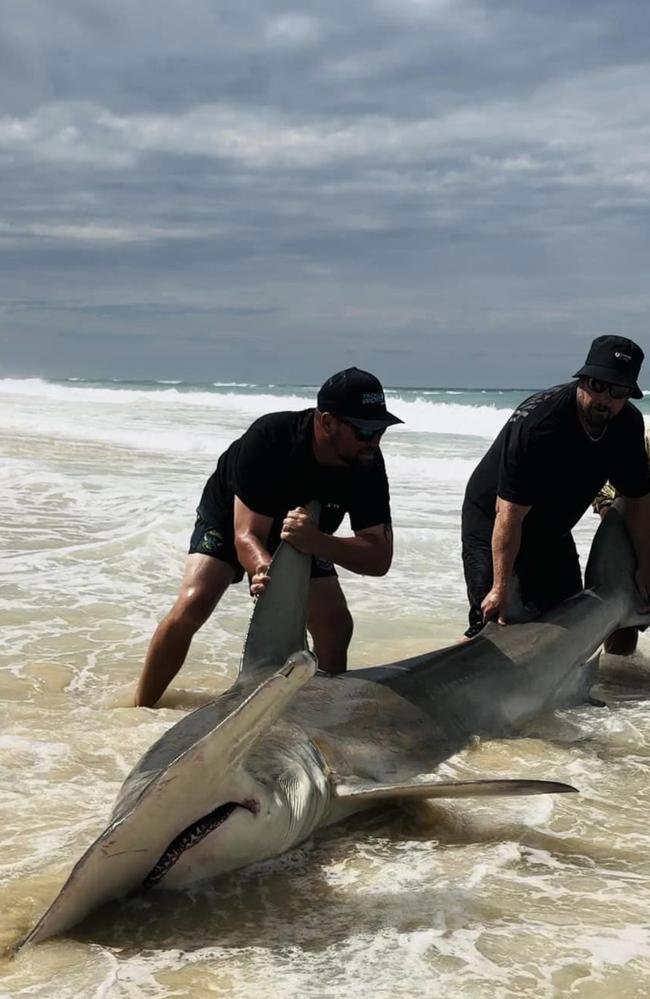
Emma Goos said she hated it when “people start being negative when people catch hammerheads”.
“It’s not like you can pick and choose what fish takes the bait. Would you prefer that the fisherman cut the line and leave the hook and line in there?
“He was respectful by the sounds and kept it in the water and released quickly.”
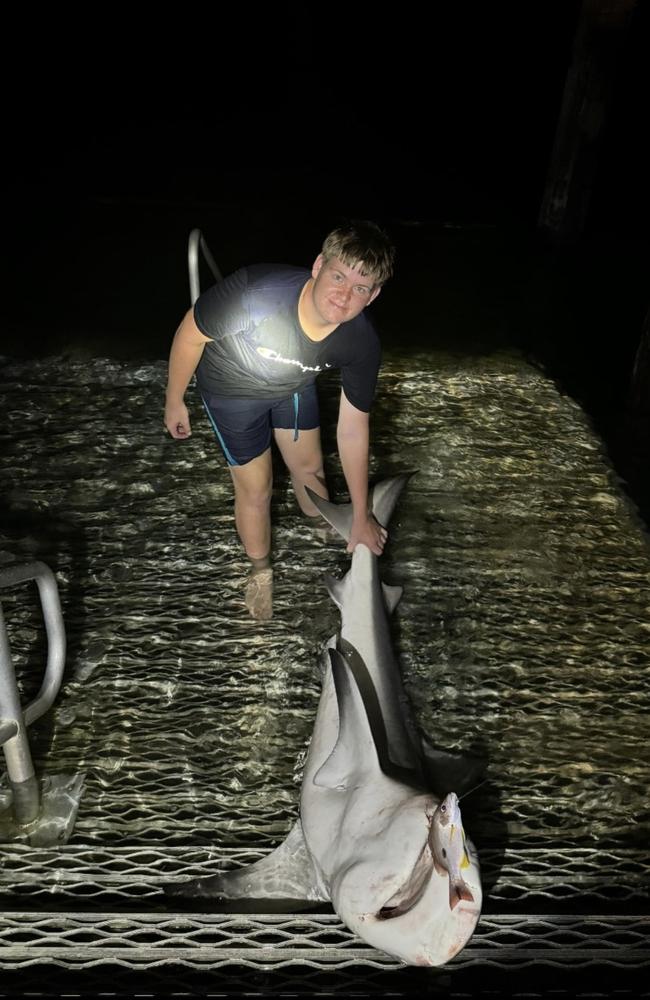
But Thomas Schlacher described the catch as “animal cruelty in its must horrific form.”
The Australian Marine Conservation Society says hammerhead sharks are long-lived and have few babies.
“These characteristics make them particularly vulnerable to overfishing.
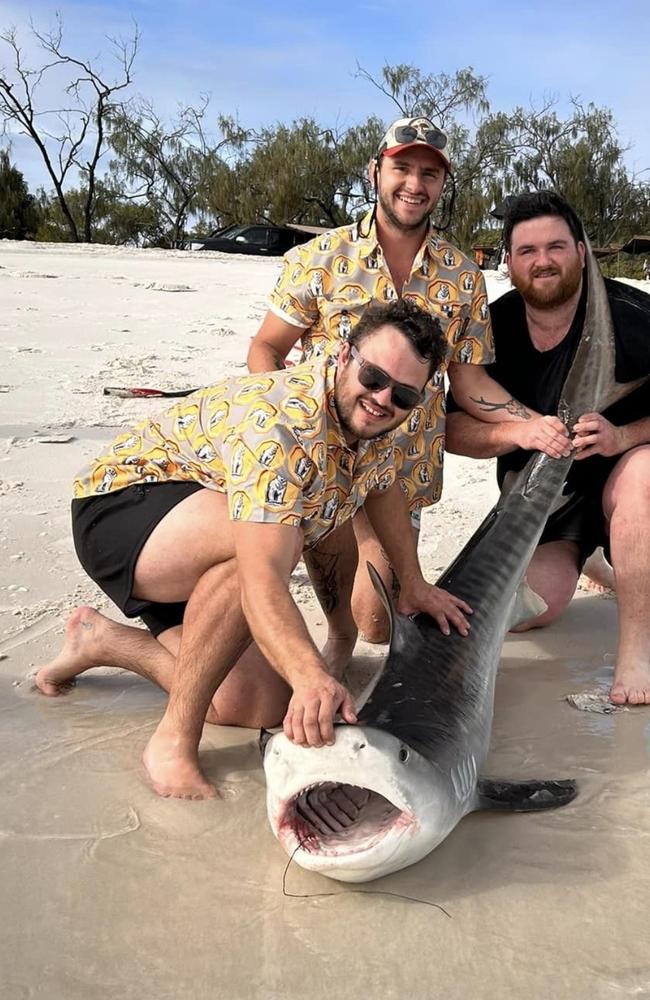
“Australian hammerhead shark populations are in decline. Scalloped hammerheads are estimated to have lost up to ~80% of their original population in Australian waters .’’
The sharks are particularly vulnerable to being caught in fishing nets because of the unique shape of their head.
In April this year, an endangered mako shark has washed up on the shores of K’gari.
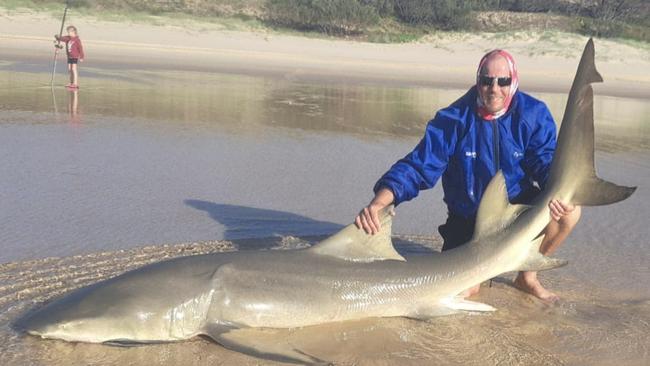
In August last year, a large bull shark and a 2m tiger shark have been caught off K’gari just weeks after a 400kg monster was caught on the opposite end of the holiday destination.
A 3m, 400kg tiger shark was caught by land-based fishermen on the east side of the island at the end of July.
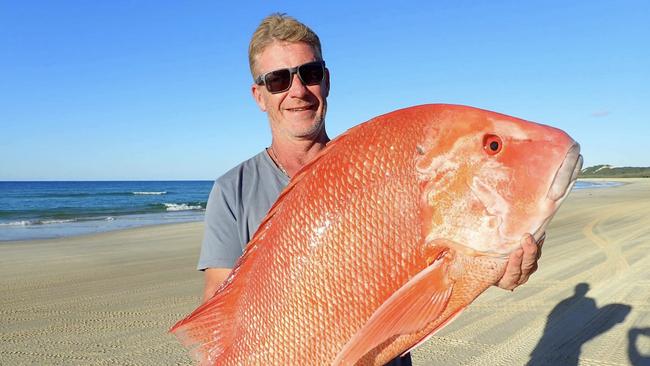
Trying his luck on the western side, fisherman Jack Boyd paddled his kayak out about 150 -200m from the shore, where he hooked two large sharks.
One K’gari tourism operator site says this of the dangers of sharks off the island.
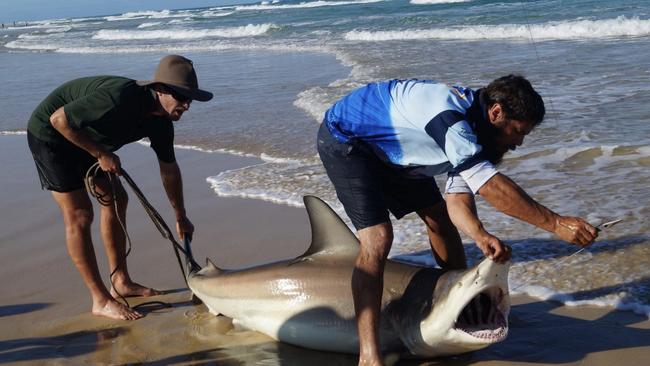
“Swimming and surfing is discouraged on the eastern beaches of the island due to strong currents and sharks.
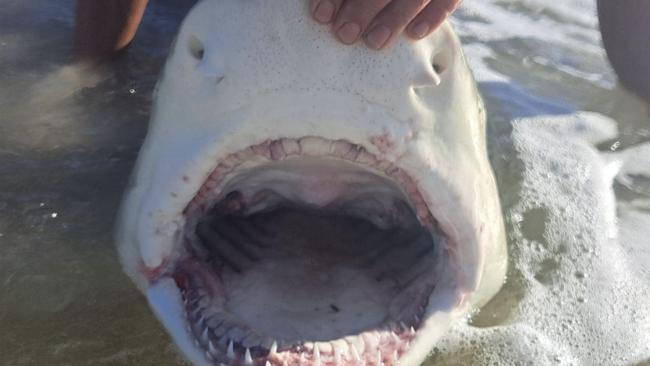
“Great White Sharks and Bull Sharks stalk these waters, quite close to shore in shallow water, so be wary of going any deeper than your knees.

“Ocean conditions can also change quickly or seem calmer than they actually are. There are no lifeguards on the beaches out here so please think twice before getting in the water!”
Originally published as Huge hammerhead shark caught off K’gari



